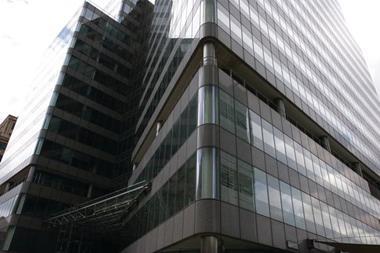The global financial crisis has affected general insurance less markedly than some other financial institutions, though it is not out of the woods yet. Angelique Ruzicka reports
The consensus is that the general insurance industry has not suffered the same extent of losses as other financial services institutions, such as banks and asset management companies in the current recession.
There are notable exceptions. AIG, for example, is still reporting losses. In May it reported a loss of $4.35bn (£2.9bn) in the first three months of 2009 and this follows its biggest loss of $61.7bn, reported in the previous quarter.
The general insurance sector is by no means immune from the impact of the global credit crisis but where the industry has suffered most is through unrealised losses in its investment portfolios, which in some instances, have resulted in a decline in policyholder surplus for 2008.
Allianz Insurance is the latest in the industry to admit a fall in investment income. For the first quarter of 2009 its investment income fell £5.4m to £26.7m (a fall of 17%) from the first quarter of 2008.
In a special feature on the global credit crunch, Willis asks what its impact has been on insurers.
- Access to capital is severely limited due to reduced activity on the debt markets. The added problem is that share prices are also trading significantly below book value, making rights issues an inefficient method for raising funds.
- The reduced level of available capital would normally be expected to result in a fall in market capacity, leading to rate increases. From 1 January 2009, rate increases were noted in specific pockets of business, but this was not consistent across all lines (see table opposite on Moody’s view on why there is a delay in rate increases). In fact, softening in some lines continued, although in a moderated way. It is largely anticipated by insurers that these lines will begin to harden during 2009 and 2010. Already the reinsurance market is hardening. Rate increases are occurring in most territories and classes, driven by continued pressure on reinsurers’ capital and increased demand from insurers looking to use reinsurance as an alternative form of capital. Reinsurance premium costs will be a key component in the calculation of insurance premiums.
- The large losses reported by financial services institutions have resulted in credit rating downgrades, leading to increased awareness and focus on risk management, including management of exposures to insurers. Although the large insurers have been subject to increased attention, they continue to carry strong ratings.
- The credit crisis has resulted in many insurance buyers reconsidering the level of diversification in their insurance portfolios. The so-called flight to quality appears to have benefited smaller specialist, niche markets, as buyers look to access alternative capacity. This trend could begin to explain why the expected increase in rates has been slower than many thought.
- On the underwriting side, difficult economic conditions increase the risk of moral hazard, including insurance fraud. However, for some lines of business the state of the economy will lead to a reduction in frequency and severity of claims. For example, the number of motor accidents may decline as the amount of travel falls. Disability insurers report that in recessions, the more experienced (and therefore less prone to accident and injury) generally maintain employment and claims are reduced.
- Furthermore, when policyholders look for ways to cut their premiums, one option may be to increase deductibles, resulting in a reduced cost for insurers when claims are made.
- Insurers will be aware that a potential consequence of initiatives by governments to revive their economies may be an increase in inflation, which could have a significant impact on claim costs.
- Insurers that have been involved in activities outside traditional insurance – activities that have generated significant losses – are scaling back or ceasing those business activities, and are focusing on underwriting discipline and adopting conservative investment policies.
It is also not easy to tell how the insurance industry will fare in the recession. Rating agencies have mixed views on the general insurance industry.
“"Reinsurance premium costs will be a key component
in the calculation of insurance premiums"
Moody’s has rated the European insurance industry’s outlook as negative, while AM Best is maintaining its stable outlook on the global reinsurance, US domestic and US commercial insurance sectors. Moody’s also has a stable outlook on the US personal lines sector, but S&P has assigned negative outlooks to both the US personal commercial lines sector since August 2008.
Fitch has awarded the US and UK life and non-life sectors negative outlooks too. The agencies’ cause for concern is the deterioration of capital due to losses on investment portfolios.
Jennifer Ellis, divisional director at Willis, says that the activities of general insurers will be further impacted as the UK recession continues through the year.
“The insurance sector will by no means be isolated from the impact. However, this impact on insurers is less severe than that experienced in other financial services sectors and for insurers with solid balance sheets and strong enterprise risk management the current climate may bring opportunities.”
She adds: “General insurers will need to monitor the exposure of capital to underwriting losses very carefully. Unable to rely on investment income, insurers will need to maintain underwriting discipline. Keeping combined ratios below 100% will be pivotal in achieving bottom-line profit.”
D&O - a thriving product in the crisis?
Nothing starts sales better than a crisis according to Doug Robare, financial and professional lines manager at Zurich. "It highlights the necessity to have proper coverage in place and work with qualified insurers and make sure you have very good risk. If anything, what the credit crisis highlighted was counterparty risk."
Providing professional indemnity as well as directors and officers (D&O) insurance for financial institutions (FIs) is going to be a thriving area in the middle of the crisis, Robare believes. There are statistics to back this up.
Willis' first quarter market update, published by FINEX Global, said the soft market for FI insurance ended in summer of 2008 and that rates have been hardening since then. This is as a result of a number of crippling claims from sub-prime related D&O cases as well as the auction rate securities scandal in the US, mortgage fraud uncovered by the property slump in the UK and Europe and professional indemnity claims against UK asset management firms.
According to Advisen D&O losses could total $5.9bn, with $5.3bn deriving from settlement and defence costs. High profile cases such as Bernard Madoff's Ponzi scheme has put these types of cover in focus more than ever.
Madoff's investment scam is likely to result in claims of between $1bn and $2.5bn. Robare says it will be some time though before the true cost of the credit crisis claims on FI institutions is known. "From a D&O perspective the quantum is not there yet on monetary value and the reason for that is because it’s a recent anomaly.
Financial institutions will face an average premium hike of around 15% in 2009 according to Willis' survey. But Robare believes this could be higher.
"We are looking at substantive increases. Those would be medium to high double digits. In the US they come out at around 50% rate increase, but I would say on average we will see increases of around 20%," he says.
Postscript
Commentators give their views on the impact of the global downturn
Mike Lawton, UK mid-market director, RSA
“As the economic downturn tests businesses nationwide, brokers can play a key role in helping clients to make good decisions about protecting their business when costs are under pressure.
The credit crunch is forcing tough challenges on managers and business owners: from squeezed profit margins to lack of consumer confidence. Under pressure, businesses can make the wrong move and put themselves at risk.
Effective risk management is also something that brokers will raise with clients. It may be a difficult conversation, but businesses need to make sure they aren’t exposed to more risks and open to more claims. Companies may make changes that mean the maintenance of essential plant is compromised – the result can be a potential claim that causes massive disruption to the business. This could mean that the owner of the business is distracted from the vital role of meeting the needs of customers at a time when competition is fierce.”
Derek Plummer, commercial director, MMA Insurance
“In a recession, there are two sets of risks to consider: those relating to your own business and those relating to your trading partners. In terms of your trading partners, play close attention to their financial security ratings – in particular any downgrades or negative watches placed upon them. You may also want to think about running credit checks on trading partners, particularly new ones.
Keep an eye out for changes in the pattern of payment from your customers. If a business usually pays regularly and then becomes erratic, have a serious look at it and consider your exposure. Look for more cost-effective ways of transacting business. Think about how your underwriters can be most effective, a combination of local proximity to brokers coupled with slick technology will be a winner.
In a recession you need to prove your value to your customers, so brokers will be looking to work with businesses who provide them fast response times and accurate documentation. When times are tough, any error or service lapse could cost you an account.”
Richard Nicholls, head of technical underwriting, Zurich UK
“From a UK underwriting perspective I would say over a year ago capital was at a surplus and everyone talked about the fact there was excess capital. Today, no one talks about there being excess capital. Obviously we need to ensure we get the right return on our capital. The (lack of) investment return is a significant driver on certain (longer tail) lines of business such as casualty.
Where we can predict the loss cost of attrition classes like motor, employers liability and domestic property, the loss cost will rise.
This is because it always has in prior recessions. There is no reason to expect that this recession will be any different.
In addition major classes of insurance are rated according to adjustment factors (business interruption values, wage roll values and equipment values). There is no doubt many of these are falling so premium volumes are under pressure unless rates rise.”
Steve Langan, managing director, Hiscox UK
“We established a credit crunch plan early in 2008 to monitor and help us manage parts of the business that are sensitive to an economic downturn. At Hiscox, we are fortunate to be in a position to grow our business during the recession. But, as some of our clients are hurting, this will begin to have an impact on us. Our long-standing goal to provide flexible underwriting and superb service is particularly relevant now and our underwriters are thinking creatively to find solutions that acknowledge the difficulties customers face. For example, we have started offering clients premium savings in return for higher deductibles in some areas of our business.
We are also talking to clients and brokers about existing options which enable them to buy a slimmed down insurance package where it suits their needs. In short, planning well ahead for economic conditions down the road and offering customers flexibility are important tactics in surviving this recession.”
Hosted by comedian and actor Tom Allen, 34 Gold, 23 Silver and 22 Bronze awards were handed out across an amazing 34 categories recognising brilliance and innovation right across the breadth of UK general insurance.










































No comments yet